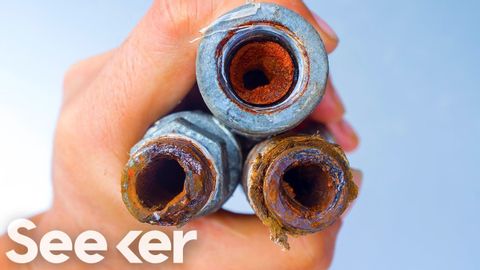
字幕と単語
鉛中毒はまだ巨大な問題であるが、迅速な解決策があるかもしれない (Lead Poisoning Is Still a Huge Problem, But There Could Be a Quick Fix)
00
林宜悉 が 2021 年 01 月 14 日 に投稿保存
動画の中の単語
exposure
US /ɪkˈspoʒɚ/
・
UK /ɪk'spəʊʒə(r)/
- n.露出;メディアにとりあげられること;暴露;さらされていること : 露出していること;露出;低体温症;(金融)エクスポージャー
A2 初級TOEIC
もっと見る エネルギーを使用
すべての単語を解除
発音・解説・フィルター機能を解除
